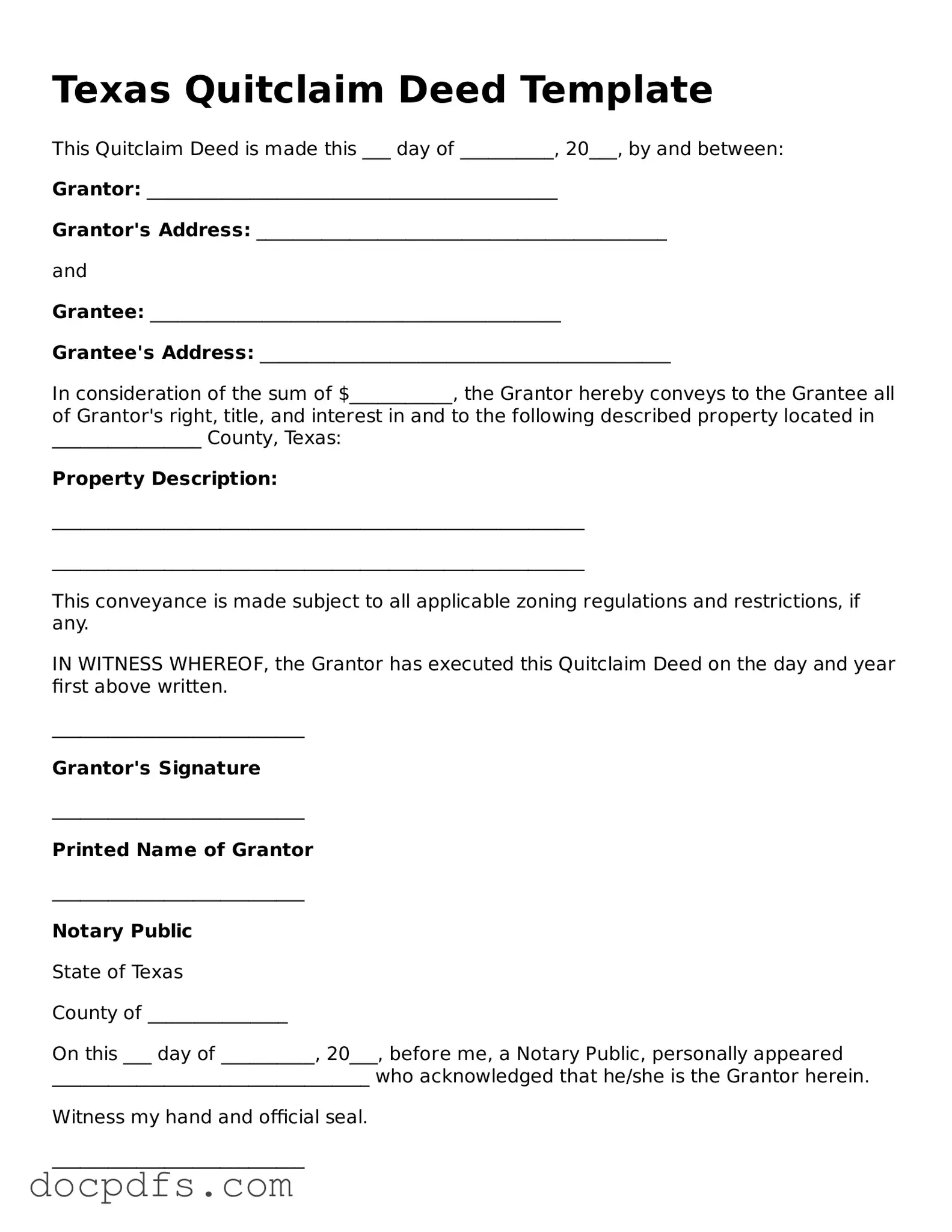The Texas Quitclaim Deed form serves as a vital instrument in real estate transactions, allowing property owners to transfer their interest in a property to another party without making any guarantees about the title's validity. This form is particularly useful in situations where the seller may not have clear title or when the parties involved are familiar with each other, such as family members or friends. The form outlines essential information, including the names of the grantor and grantee, a legal description of the property, and the date of transfer. Unlike warranty deeds, which provide a guarantee of clear title, the quitclaim deed carries no such assurances, making it essential for both parties to understand the implications of this type of transfer. Furthermore, the Texas Quitclaim Deed must be properly executed and notarized to be legally binding, and it must be filed with the county clerk to ensure public record. By understanding the key components and uses of the Texas Quitclaim Deed, individuals can navigate property transfers more effectively and make informed decisions regarding their real estate transactions.
